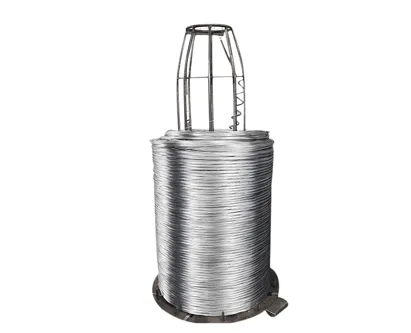Optimizing Concrete Reinforcement with Effective Rebar Tying Techniques for Structural Integrity
Concrete Rebar Ties The Backbone of Structural Integrity
In the realm of civil engineering and construction, the significance of concrete rebar ties cannot be overstated. These integral components play a crucial role in ensuring the stability, durability, and longevity of concrete structures. Understanding concrete rebar ties involves delving into their purpose, types, installation methods, and the overall impact on structural integrity.
Concrete, renowned for its compressive strength, lacks tensile strength. This is where rebar, or reinforcing bar, comes into play. Rebar is typically made from steel, and its purpose is to provide the necessary tensile strength that concrete requires to withstand various forces and loads. However, merely placing rebar within concrete is not sufficient; it must be properly tied and secured to function effectively.
Rebar ties are essentially the binding agents that hold rebar together, ensuring they remain in place during the concrete pouring process and throughout the lifespan of the structure. These ties prevent displacement of the rebar, which can lead to structural failure. By maintaining the correct position and spacing of the rebar, ties also help in ensuring that the concrete adequately envelops the bars, promoting the composite action between the steel and the concrete.
There are several types of rebar ties commonly used in construction. The most prevalent is the wire tie, typically made of soft annealed wire. This type is easy to manipulate, allowing for quick binding of rebar intersections. Another popular option is the plastic tie, which offers the added advantage of being corrosion-resistant, making it ideal for structures exposed to harsh environmental conditions. Mechanical ties, like rebar clips or clamps, are also emerging as efficient alternatives, reducing labor time and ensuring consistent tension on the rebar.
concrete rebar ties

Installation of rebar ties requires skill and precision. Proper spacing and alignment are critical for the performance of reinforced concrete. The tying process generally involves wrapping the wire around the intersecting rebars and twisting it securely. Special tools, such as rebar tie guns, can be employed to speed up this process, providing consistent tension and stability.
The impact of concrete rebar ties on structural integrity is profound. A well-tied rebar framework ensures that the load is evenly distributed across the concrete, reducing the risk of cracking and eventual structural failure. Additionally, it aids in managing tensile stresses that occur due to factors such as temperature variations, shrinkage, and external loads. In high-stakes structures like bridges, high-rises, and dams, the importance of effective rebar tying cannot be overlooked.
Moreover, the use of rebar ties significantly influences the overall construction process. Properly tied rebars lead to faster concrete pouring and curing times, allowing for quicker project completion. This efficiency can translate into financial savings, making it a vital consideration for contractors and project managers.
In conclusion, concrete rebar ties are an essential aspect of modern construction practices. They enhance the synergy between concrete and steel, ensuring structures can withstand various forces while maintaining their integrity over time. As construction techniques evolve and materials advance, the methods and materials for tying rebar will continue to develop, but the fundamental necessity of these ties will remain. Understanding their role is crucial for anyone involved in construction, engineering, or architecture, as they are indeed the backbone of structural integrity.
-
The Durability and Versatility of Steel Wire
NewsJun.26,2025
-
The Best Iron Nails for Your Construction Projects
NewsJun.26,2025
-
Strengthen Your Projects with Durable Metal Stakes
NewsJun.26,2025
-
Get the Job Done Right with Duplex Nails
NewsJun.26,2025
-
Explore the Versatility and Strength of Metal Mesh
NewsJun.26,2025
-
Enhance Your Security with Razor Wire
NewsJun.26,2025














